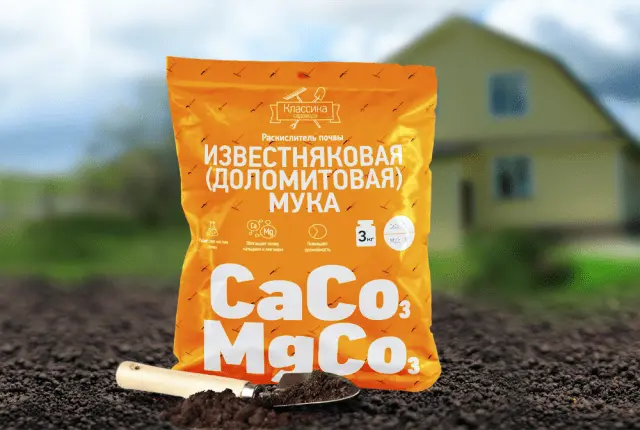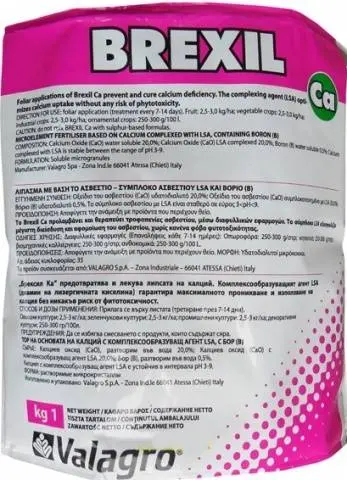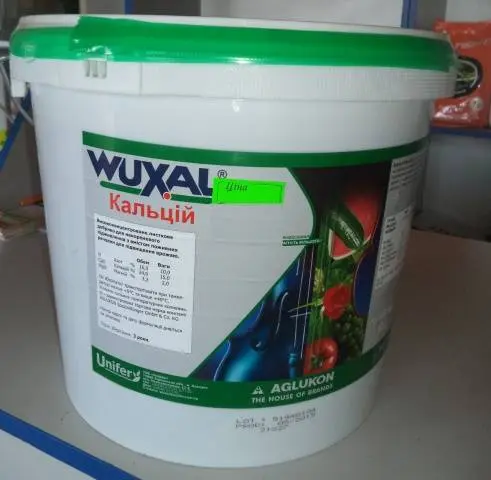Contents
Tomatoes are such plants, when growing which it is almost impossible to do without top dressing if you want to get a full-fledged harvest of tasty fruits. Of course, it is best to use complex fertilizers, but this does not always work out, in addition, there are times when plants lack a particular substance. In the case of tomatoes, most often this happens with calcium. This element plays such an important role in the life of tomatoes that gardeners cannot but recall its existence.
It is interesting that there are a great many fertilizers containing calcium, but most of them are rather slow-acting and are not suitable for use in cases where prompt help is needed for tomatoes. But in many situations, the so-called folk remedies, the action of which has been tested for centuries and there is no doubt about their safety, may well help.
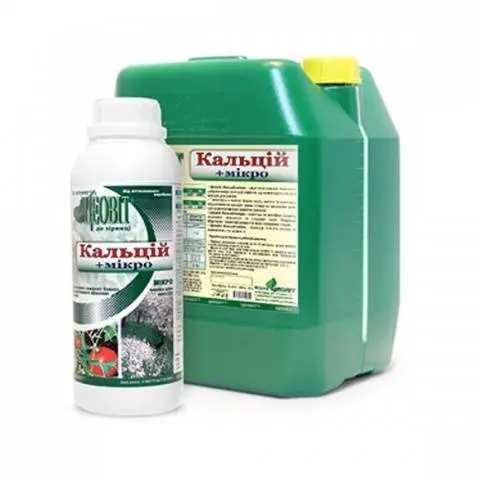
What is Calcium for?
Calcium is one of the most essential nutrients for plants, in addition, it is absorbed by them in such large quantities that it can be safely considered if not a macronutrient (such as nitrogen, phosphorus and potassium), then at least a mesoelements in relation to most garden crops.
- Tomatoes show a need for calcium already at the time of seed germination: its deficiency can slow down the emergence of seedlings, since it accelerates the consumption of seed proteins during germination.
- With a lack of calcium, first of all, the root system begins to suffer – the development and growth of roots slows down, root hairs do not form.
- It is also necessary for the growth of shoots and fruits – therefore, its deficiency most quickly affects the development of young tomato organs: growth points, root tips die off, buds and ovaries fall off.
- Calcium plays an equally important role in the metabolism of tomato plants; it balances the ratio of other nutrients contained in soils.
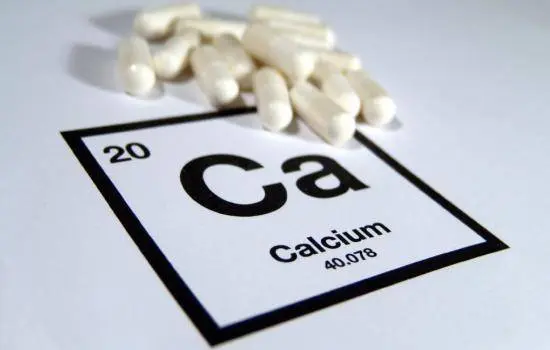
So, calcium is able to eliminate the harmful effects of aluminum, iron and manganese, which can be active in acidic podzolic soils, an excess of these elements is harmful to any plants, including tomatoes, and the addition of calcium converts them into inactive forms.
- This element contributes to the decomposition of organic matter in the soil, thereby forming and maintaining its structure.
- Calcium also plays a role in photosynthesis, it is involved in the conversion of nitrogenous substances and promotes the movement of carbohydrates.
Signs of calcium deficiency in tomatoes
Tomatoes differ somewhat from other plants in their response to calcium deficiency. In the very initial stage of the lack of this element, fruits with a brown or gray top appear on tomato bushes. This spot can quickly spread to most of the tomato.

This so-called blossom end rot is not an infectious disease, but only a reaction of tomatoes to a lack of calcium. Moreover, there are varieties of tomatoes more or less susceptible to this phenomenon.
Interestingly, blossom end rot can also appear on soils that have been given calcium fertilizers before winter. That is, soils can be filled with this element, but due to excessive doses of nitrogen or potassium fertilizers, it is in a form that is impossible for tomato plants to assimilate it. Therefore, for first aid, tomatoes need to use foliar top dressing with instant calcium fertilizers so that the element is directly absorbed through the leaves.
If the lack of calcium continues to worsen, then other signs appear:
- The apical bud and young leaves become very light, while the old leaves remain dark green;
- Plants freeze in growth and development;
- The shape of the leaves changes, they twist;
- Finally, the tops of the shoots die off, necrotic spots appear on the leaves.
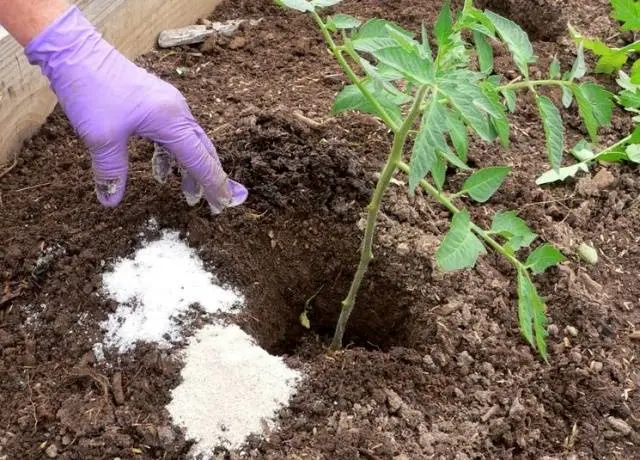
Therefore, it is very important to observe the correct proportions in feeding tomato plants, so as not to overdo it with some nutrients to the detriment of others.
By the way, an excess of calcium can lead, in turn, to a violation of the absorption of nitrogen, potassium, magnesium, as well as iron and boron. Accordingly, this can manifest itself as the appearance of light spots of an indefinite shape on the leaves, when the veins themselves remain green.
Fertilizers containing calcium
Most often, fertilizers for tomatoes containing calcium are applied during autumn or spring digging of the earth. For acidic soils, this necessary procedure is called liming.
For this, the following types of fertilizers are most often used:
- Limestone flour – is a ground limestone, which is a widespread sedimentary rock. The neutralizing capacity is from 85 to 95%. May contain impurities in the form of sand and clay up to 25%.

- Dolomite flour – consists of 56% calcium carbonate and 42% magnesium carbonate. Impurities in the form of sand and clay are, as a rule, no more than 4%. Thus, when applying this fertilizer, the soil is enriched with both calcium and magnesium. This type of fertilizer does not decompose on acidic soils as quickly as limestone flour.
- Slaked and burnt lime – contain only calcium in their composition, the neutralizing ability of these fertilizers is very high. There are almost no foreign impurities. But their cost is much higher than other calcium fertilizers and they are not so convenient to use.
- ground chalk – is a soft unrefined form of limestone, it contains pure calcium carbonate with an admixture of silicon oxide and clay. Neutralizes acidity completely.

There are also two calcium compounds that generally do not have the ability to neutralize soil acidity, but are nevertheless valuable calcium fertilizers. They are usually used as top dressings on neutral and alkaline soils. This is gypsum, which is calcium sulfate and calcium chloride.
Calcium nitrate
There is a fertilizer that, unlike most previous varieties, dissolves well in water, which means it can be used for foliar top dressing of tomatoes. It is calcium nitrate or calcium nitrate. This fertilizer contains about 22% calcium and 14% nitrogen.
Calcium nitrate is available in the form of white granules. It is characterized by increased hygroscopicity, therefore it requires storage in a dry place, in a hermetically packed form. Granules dissolve well in water of any temperature.

The use of calcium nitrate has the following advantages for top dressing tomatoes:
- Accelerates the development of plants and the ripening of tomatoes, which allows you to harvest an earlier harvest.
- Increases overall yield by 10-15%.
- Helps tomatoes tolerate sudden changes in temperature.
- Increases immunity of tomatoes to diseases and promotes protection against pests.
- Improves the taste and presentation of tomatoes, increases their keeping quality.
Calcium nitrate can be used already at the stage of growing tomato seedlings. For this, a product of the following composition is used: 20 g of calcium nitrate, 100 g of ash and 10 g of urea are dissolved in 10 liters of water. With the resulting solution, tomato seedlings are watered under the root 10-12 days after picking.
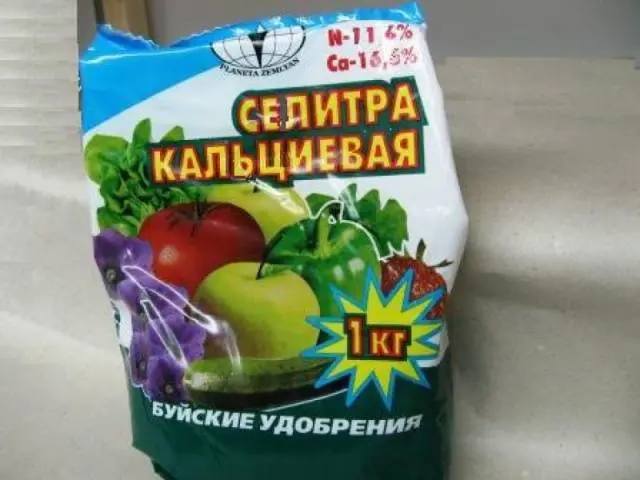
When planting tomato seedlings in the ground, calcium nitrate granules can be added directly to the plant holes. Approximately 20 g of fertilizer will be required for each bush.
Finally, for the prevention of blossom end rot of tomatoes, as well as for protection against ticks and slugs, foliar treatment of tomatoes with calcium nitrate is used. To do this, 100 g of fertilizer is dissolved in 10 liters of water and the tomato bushes are carefully sprayed with the resulting solution. This procedure can be carried out either during flowering, or during the period of fruit formation.
Other water soluble fertilizers
Calcium nitrate is the most popular and common water-soluble calcium fertilizer used for top dressing of tomatoes. But it is far from the only one. Firstly, for foliar top dressing, you can also use calcium chloride, which dissolves well in water. To prepare a spray solution, 100 g of this fertilizer is diluted in 10 liters of water.

There are also a number of modern fertilizers for tomatoes that contain calcium in the form of chelates, that is, in the form that is easiest for plants to assimilate. These include the following fertilizers:
- Calbit C is a liquid chelate complex with up to 15% calcium.
- Brexil Ca is a chelate complex with ligninpolycarboxylic acid with a calcium content of up to 20%.

- Vuksal Calcium is a fertilizer with a high content of calcium (up to 24%), nitrogen (up to 16%), as well as a wide range of trace elements in chelated form (magnesium, iron, boron, molybdenum, manganese, copper and zinc).

Folk remedies containing calcium
The most famous and popular folk remedy for replenishing the calcium content in tomatoes is wood or straw ash. Depending on its origin, it may contain from 25 to 40% of this essential element.
To prepare a solution for watering tomato bushes at the root, a glass of ash is dissolved in a bucket of water. After thorough stirring, water the tomato bushes at the rate of 1-2 liters per bush. To prepare foliar top dressing of tomatoes with ash, they act in a different way: 300 grams of ash is diluted in three liters of water and boiled for 30 minutes. After that, they insist for about 4-5 hours, add water so that the volume of the solution is brought to 10 liters, as well as a little laundry soap for sticking and spray the tomato bushes.
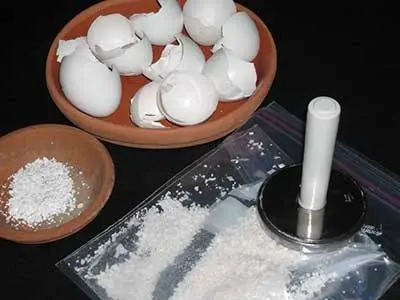
Finally, a fairly simple remedy for replenishing the loss of calcium in tomatoes at home is spraying with eggshell infusion. The finer you can crush the shell, the better. Crushed shells from three eggs are added to one liter of warm water and infused for several days. After the appearance of a characteristic smell of hydrogen sulfide, the infusion is ready for use.
To summarize
As you can see, the choice of fertilizers containing calcium is quite extensive and can satisfy the needs of any gardener when growing tomatoes.










